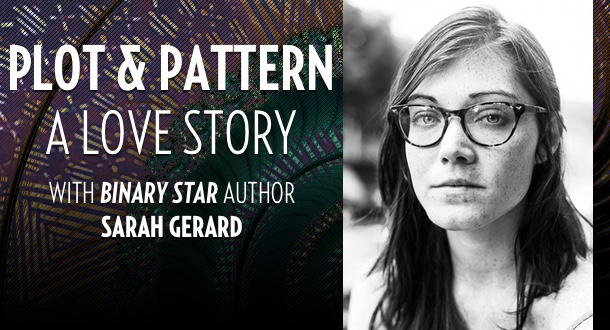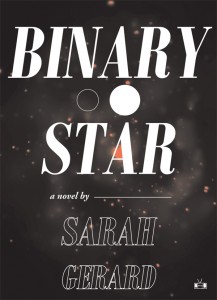
'Plot' is so many different things. So instead of thinking about plot, think about pattern—the repetition around which we form expectations. Sarah Gerard will show you how in this four-week workshop.
Your Instructor: Sarah Gerard, author of BINARY STAR
Where: Online — Available everywhere!
When: This class is not currently enrolling. To be notified when it is offered again, Click Here
Enrollment: 15 students
Price: $325
Class Description
Some love plot, some hate it.
Some ask, “Why write without it?”
Some think plot happens accidentally, while others would even like to dispose of it altogether.
How can we talk about plot, which is so many different things?
Instead, let’s talk about pattern.
A pattern is a repetition around which we form expectations. It is a rule, or set of rules, that we follow. It’s also something we can learn to use to our advantage—by following it, altering it, or breaking it. By exploring pattern’s relationship to plot, we will come to understand the dynamics working within a given story, and how we can use them to inform and surprise reader expectations. We will also come to see how the structure of our story can guide our decisions while writing.
Welcome to Plot and Pattern: A Love Story, led by acclaimed Binary Star author Sarah Gerard.
At the end of these four weeks, you’ll have read and responded to a variety of pattern usages in ten short stories by writers writing today, as well as a number of ancillary readings which illuminate the patterns at work within those short stories. You'll look at patterns operating at all levels of each story: plot structure, scene, and prose.
And you'll end the course having completed at least five new pieces of critical or creative writing, in which you’ll put this new knowledge to use.
What This Class Covers
Week 1: And So
We’ll open our class with two selections by contemporary writers using traditional plot structures with linear timelines. We’ll examine the ways that, scene-by-scene, these writers use repetition and variation to build character and move a story forward. Our readings this week are “Car Crash While Hittchhiking” by Denis Johnson and “The Other Kind of Magic” by Juliet Escoria.
Assignment: Write a simple short story in Escoria’s style using traditional “and so” plot structure.
Week 2: Breaking the Mold
This week, we’ll discuss the ways contemporary writers use pattern to reawaken old forms, looking specifically at modern fairy tales. Few forms come with more rules and patterns than fairy tales, but what happens when you break those rules, or alter the patterns? Further, what happens when you borrow fairy tale elements and put them in new places? We’ll answer these questions with this week’s readings: “The Good Farmer and the Bad Farmer” by Ted Pelton and “The Swan Brothers” by Shelley Jackson.
Assignment: Students have the option of either writing a statement like Ted Pelton’s about another contemporary fairy tale, or writing a contemporary fairy tale of their own.
Week 3: The Dressmaker’s Pattern
Like a seamstress making a dress, the way you organize the sections of your story, and where you sew the seams, significantly affect the story’s outcome. But unlike a seamstress, a writer can continuously rearrange the seams of a story, challenging a reader’s expectations and enlivening the story at each turn. We’ll look at the ways two contemporary writers use structure to keep their stories fresh: Justin Taylor’s “Flings” and Justin Torres’s “Reverting to a Wild State” are this week’s readings.
Assignment: Students have the option of either examining how Robert Coover uses time in “Going for a Drink” or writing a very short story of their own.
Week 4: Alternative Plot Structures
How does a nonlinear story work? What holds the events of the story together? How do you know where you are in time—and most importantly, how can you have forward movement in a story when the events of the story are out of order? We’ll answer all of these questions and more, including questions about patterns in language and sentence structure, in our discussion of Kelly Link’s story “Valley of the Girls” and Patricio Pron’s “Something in Us Wants to Be Saved”.
Assignment: Write a story in two pages without any periods. You can go anywhere in space and time.
Goals Of This Class
- Learn to use pattern to your advantage at all levels of a story: plot structure, scene, and prose
- Learn to use time in creative ways in your fiction
- Learn how to organize your stories in ways that guide reader expectations and surprise readers at every turn
- Familiarize yourselves with ten contemporary writers using form in bold ways
- Write five new pieces that smash your preconceptions about plot


